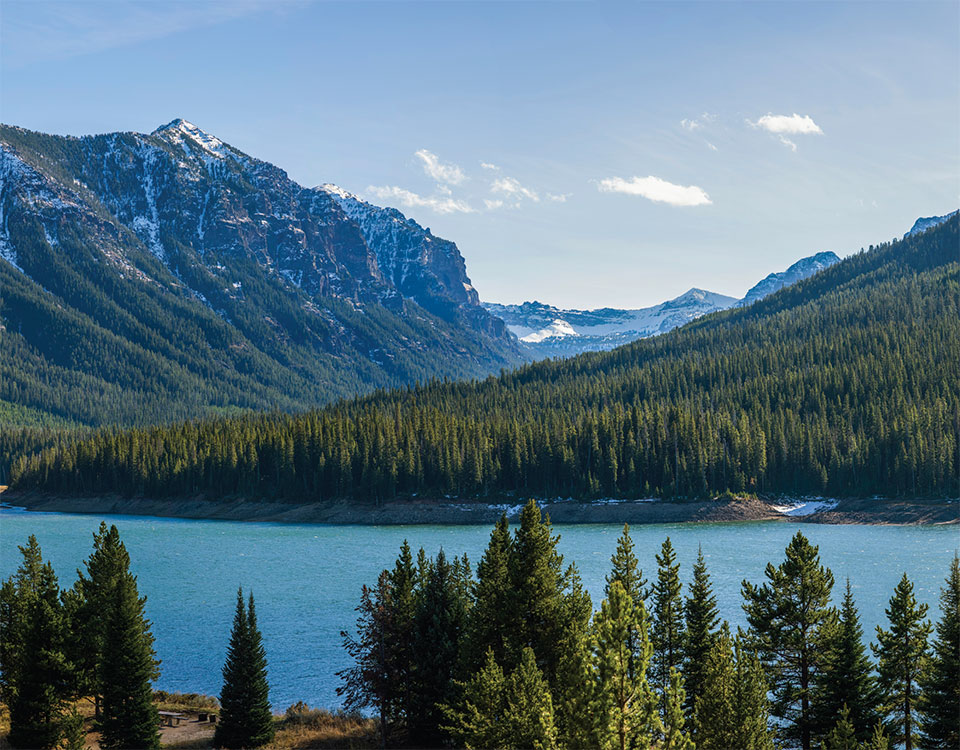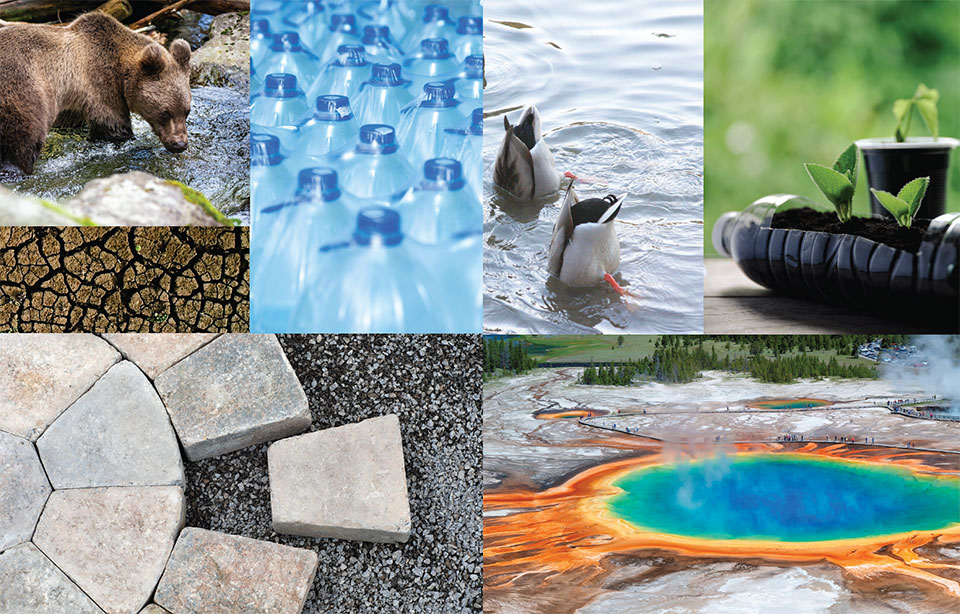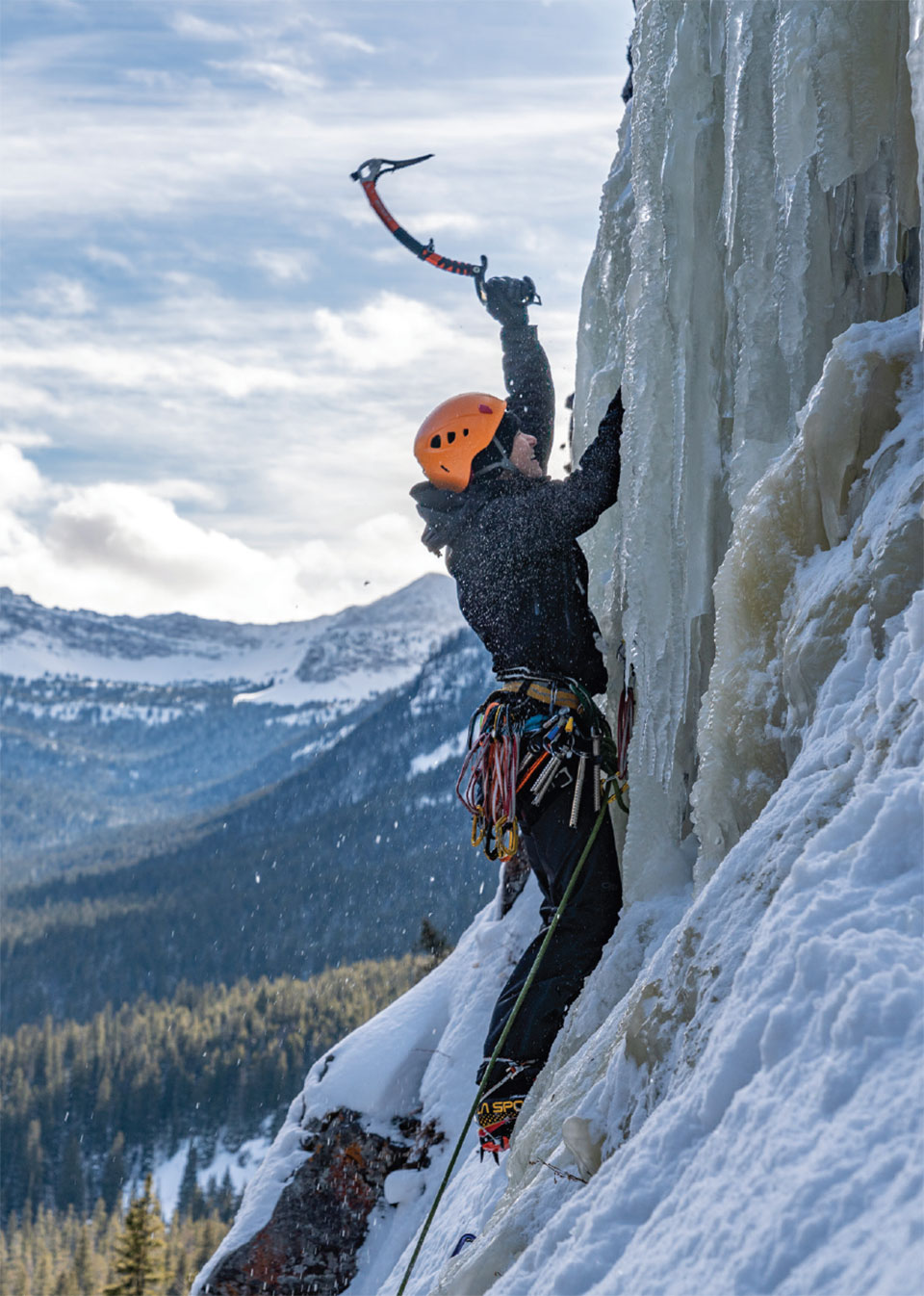Our Water, Our Home
by Cassidy Mantor
Saguaro cacti and layers of red sandstone and sun-bleached limestone. Southwestern skies from Georgia O’Keeffe paintings. Dramatic Wylie E. Coyote-style talus slopes and cliffs dropping off into the Colorado River. Sedona. Moab. Palm Springs. The desert is an oft-romanticized part of the American West with good reason. The landscapes are profoundly different from other more hydrated parts of our country, like Bozeman, Montana. Except that, believe it or not, Bozeman, Montana, is actually an arid climate. We are familiar with marooned travelers thirsting their way through the Mojave or Sonoran Deserts to find one drop of water. That narrative doesn’t exist for Bozeman. But it should.

About 80% of Bozeman’s water comes from snowmelt from the Gallatin Range that flows into Hyalite and Bozeman Creeks. The remaining 20% is sourced from a developed spring in the Bridger Range.
Bozeman receives only 16 inches of precipitation each year and is technically a high-desert climate. While the snowcapped Gallatin Range looms above and Gallatin River runs nearby, with flats to fish and hunt and world-class skiing in the backyard, Bozeman and the Big Sky region are not actually wetlands. Bozeman’s thirst for water is so voracious that forecasts revealed it was on track for a water shortage in 10 years. It was such a shocking proposition that in the fall of 2023, the City of Bozeman adopted a new water conservation and efficiency plan designed to take the City into 2040.
Water has always been one of the most precious resources in the West. As more people make Bozeman home, WHJ recognizes the importance of responsible water use and conservation. You built your dream house here because you loved the place. Now it’s time to understand how to take care of the place and what efforts will keep the dream alive.
Where does our tap water come from?
About 80% of Bozeman’s water comes from snowmelt from the Gallatin Range that flows into Hyalite and Bozeman Creeks. The remaining 20% is sourced from a developed spring in the Bridger Range.
You might be wondering why we’re talking about water now. There’s already a mitigation plan in place and we’ll follow it. At the risk of sounding like an environmental Chicken Little, making small lifestyle changes will help Bozeman save every last drop of water, something that will come in handy in dry years as well as ones with heavy snowfall. Conservation practices reduce costs of supplying water and prolong the life of the municipal water infrastructure. Using less water also reduces our impact on the environment and preserves resources for future generations who live, work, and play in and around Bozeman.

What can you do?
Smart landscaping is one of the main changes that we all can make to support the environment. With a significant portion of residential water being used for landscape irrigation, hardscaping is another responsible way to add visual interest and benefit the environment. Pavers can divert rainwater and be laid to capture water and provide natural irrigation. Renovating and remodeling with high-efficiency shower heads and appliances and evaluating sprinkler and irrigation systems are also ways to prioritize water conservation in the home.
Around town, Bozeman has several examples of how to make smart water choices. At City Hall, native plants and permeable pavers help with irrigation and contribute to a sustainable garden. While the species attract pollinators and insects, mosquitos do not survive in this environment – the water drains and moves faster than their eggs can hatch. The Museum of the Rockies hosts an educational rain garden. This garden is designed to show examples of drought-tolerant flowering plants year-round, from hearty spring bulbs to fall asters. It also is a pollinator garden. At the Bozeman Public Library, a low-volume drip irrigation system minimizes water lost to evaporation, a valuable conservation method since we can’t make more water. North 27th Avenue, North 7th Avenue, and the Public Safety Center also showcase colorful landscaping options meant to inspire citizens and show how easy it is to make water-wise choices.

Around town, Bozeman has several examples of how to make smart water choices. At City Hall, native plants and permeable pavers help with irrigation and contribute to a sustainable garden. While the species attract pollinators and insects, mosquitos do not survive in this environment – the water drains and moves faster than their eggs can hatch.
Small changes add up.
We’ve become accustomed to switching single-use plastic for reusable water bottles. Opting for no straw or using a compostable one minimally affects our lives but has a positive impact on the greater environment. Planting differently, composting, and educating ourselves on water use will lead to becoming more responsible citizens. Water doesn’t just come from our taps. The sooner we shift our consciousness, the longer we will be able to enjoy the places we have come to love.
